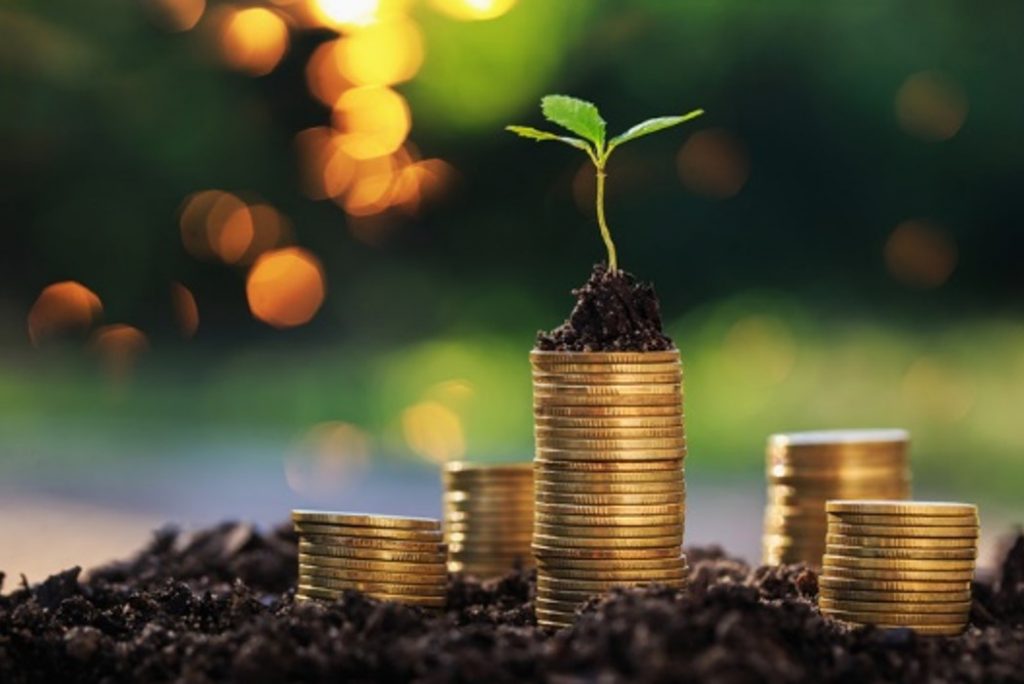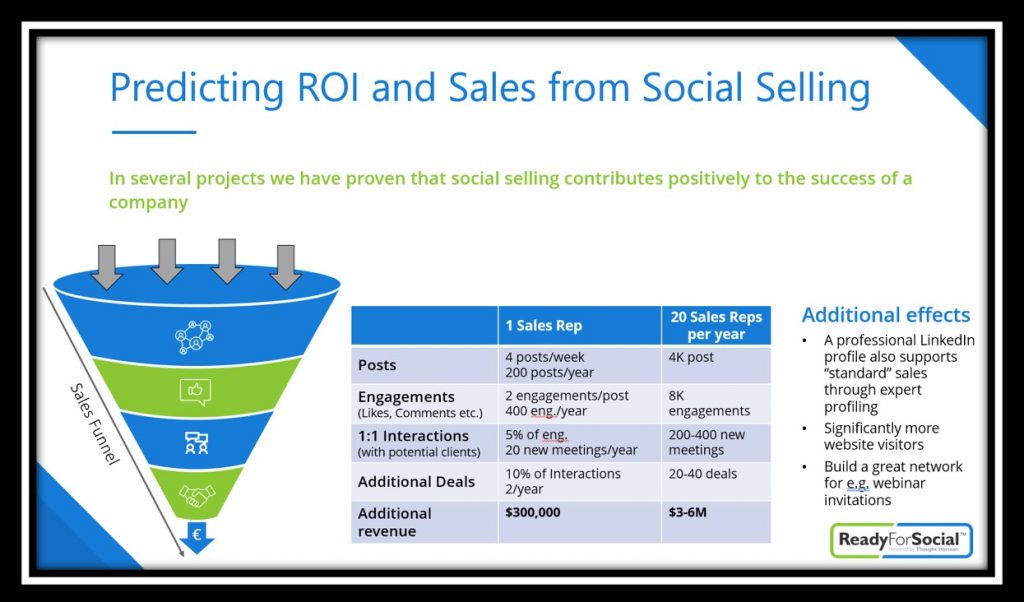
Getting ROI from Social Selling—how do you measure it?
ReadyForSocial™ is the only all-in-one program that can power your entire sales team on social media. Contact us to get started!
Many companies contemplating social selling share a common concern—how do I know that social selling is working and giving me a good return on my investment? While more classic social media marketing strategies have a clear-cut way to see results and measure ROI, skeptics may perceive social selling benchmarks as less straightforward. How can you be objectively, numerically assured that your investment in a social selling program is worth it for your business?
Social selling by the numbers
Research shows that social selling is an excellent way to engage with the modern customer and market, and it is only getting more important. McKinsey (2021) found that around 80% of business-to-business decision makers prefer to do every step of business remotely—a so-called “new way of purchasing.” Social selling fits the needs of many buyers and is an effective way to connect with potential clients.
In addition, today’s customers already have a good idea of what they want in terms of product and price before they seek out sellers. Gartner (2021) found that a vast majority of buyers do independent research about products before even contacting a seller or provider. With ever-expanding access to information, the buyer is more educated and aware than ever. Effective social selling can help bring your product to the forefront of a buyer’s awareness—but the keyword is “effective.”
How, then, can you ensure that your social selling is effective and giving you a good ROI?
How to measure social selling ROI
We can look at and calculate social selling metrics through a funnel analogy. In the top of the funnel goes the content posted on social media by a salesperson. Each post gets a certain number of engagements—likes or reactions, comments/replies, and shares/retweets. An important metric in further ROI calculations is the average number of engagements per post. As the numbers go down the funnel, they will certainly get smaller, but with a large social network, frequent posting, and well-curated content, one can hope to get a good number of engagements per post.

From that average, we can assume (based on experience and aggregated data) how many personal interactions will result from each post/engagement. The graphic shows an average taken from all Ready For Social users—here we conservatively say 5% of engagements will result in meaningful person-to-person connections and possible sales. Again, the number certainly decreases down the funnel, but can be bolstered by many connections, salesperson effort, and good content.
From these interactions come sales and new revenue! Multiplied by the number of salespeople utilizing social selling, you can get a good estimate of the additional revenue earned by way of social selling and calculate an ROI on a social selling platform.
In conclusion
Social selling return on investment depends on many factors. However, with talented salespeople, well-curated and managed content, and social selling know-how, you can ensure a great ROI, not to mention the personal connections you can make with people you may not have otherwise reached.
Does your organization calculate returns on social selling investment? Do you use the methods described here, or go about it in a different way? Let us know in the comments. We’d love to hear from you.

